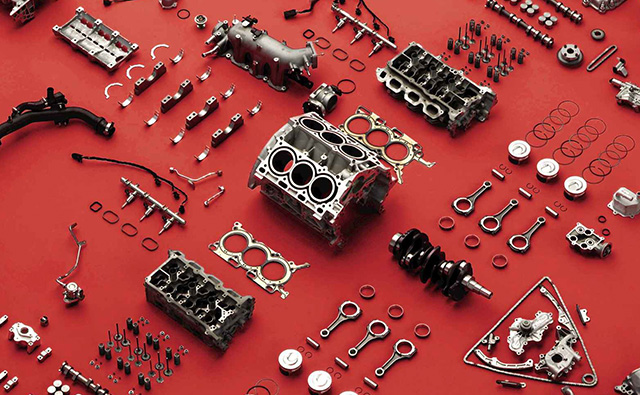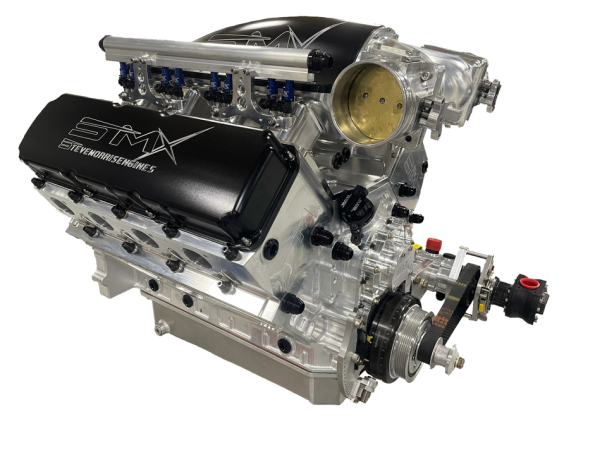The Development of High-Performance Automotive Powerplants: A Comprehensive Summary of Cutting-Edge Engine Technologies in the Modern Automotive Sector
The quest for much more efficient, powerful, and ecologically mindful engines has led to a myriad of innovations that have actually reshaped the method we think about auto power. From turbocharging innovations to the smooth assimilation of hybrid powertrains, the world of high-performance engine modern technologies continues to press borders and redefine opportunities.
Turbocharging Advancements
The evolution of high-performance vehicle powerplants has been considerably affected by continual advancements in turbocharging technologies. Turbocharging has transformed the auto market by supplying a more efficient means of boosting engine power result without considerably boosting engine variation. By utilizing exhaust gases to drive a wind turbine that presses the incoming air into the engine, turbochargers successfully increase the air-fuel blend's thickness, causing improved combustion and greater horse power levels.
Among the key developments in turbocharging technology is the advancement of variable geometry turbos (VGTs) or variable nozzle generators (VNTs) These systems enable extra precise control over boost levels, decreasing turbo lag and enhancing engine reaction across a larger range of RPMs. Furthermore, twin-scroll turbochargers have actually come to be prominent in high-performance applications due to their capacity to different exhaust pulses for far better energy application.
Crossbreed Powertrain Assimilation
Proceeding the trajectory of technical advancements in automobile powerplants, the combination of hybrid powertrains notes a considerable shift in the direction of improving both effectiveness and performance in contemporary automobiles. Crossbreed powertrains combine standard inner burning engines with electric motors, enabling enhanced fuel economic situation, reduced exhausts, and boosted power output (engines for africa). By flawlessly mixing the strengths of both power sources, crossbreeds supply a functional option that deals with varying motoring conditions and demands
One trick advantage of hybrid powertrain assimilation is the capability to recapture power during braking or drifting, saving it in the automobile's battery for later use. This regenerative stopping function not only improves efficiency yet likewise contributes to expanding the general variety of the lorry. The instantaneous torque shipment of electrical motors enhances the power shipment of inner combustion engines, resulting in boosted acceleration and responsiveness.
Car manufacturers are continuously fine-tuning crossbreed powertrain innovations, intending to strike an equilibrium between efficiency and sustainability. engines for africa. As consumer need for environmentally friendly yet powerful automobiles expands, the combination of hybrid powertrains is positioned to play a critical function in forming the future of automotive propulsion systems

Advanced Fuel Injection Systems
With improvements in auto modern technology, the implementation of advanced fuel injection systems has transformed the effectiveness and performance of contemporary automobiles. These innovative gas shipment systems have actually replaced standard carburetors because of their remarkable precision in providing fuel to the engine. Straight gas shot, where gas is splashed directly into the combustion chamber, permits better control over fuel-air mixture, resulting in improved power output and fuel efficiency.
One of the key advantages of innovative gas shot systems is their capability to adapt to varying motoring conditions in real-time. This adaptability ensures ideal engine efficiency across different situations, whether it be during aggressive acceleration or travelling at a consistent rate. Furthermore, contemporary fuel injectors are created to atomize gas better, promoting cleaner burning and lowering unsafe discharges.
Additionally, progressed fuel shot systems play an essential role in allowing the execution of various other ingenious engine modern technologies, such as turbocharging and variable valve timing, more enhancing the total power and performance of high-performance vehicle powerplants.
Performance-Enhancing Electronics

One secret modern technology that exemplifies this is the Electronic Control Unit (ECU), which functions as the mind of the engine monitoring system. The ECU processes real-time data from different sensing units to specifically control ignition timing, fuel injection, and other essential parameters, resulting in enhanced power shipment and gas performance. In addition, modern technologies like variable valve timing (VVT) and digital throttle control (ETC) further add to optimizing engine efficiency by readjusting shutoff opening times and throttle actions based upon driving problems.
In addition, performance-enhancing electronic devices make it possible for attributes such as launch control, grip control, and flexible shock absorber, enhancing both the driving experience and overall car performance. The continuous evolution and integration of these advanced digital systems proceed to press the borders of vehicle design, causing try this website extra effective, efficient, and technologically advanced high-performance vehicles.
Future Fads in Engine Growth
As vehicle powerplants advancement with the integration of performance-enhancing electronic devices, the trajectory of engine growth is poised to embrace future trends that will certainly redefine the landscape of high-performance automobiles. One famous fad on the perspective is the continued downsizing of engines without compromising power output. This downsizing is attained with technologies like turbocharging and electrification, making it possible for smaller sized engines to deliver the performance of bigger ones while enhancing gas performance.
One more key trend is the increasing fostering of hybrid powertrains in high-performance lorries. Hybrid systems combine inner combustion engines with electric motors to boost acceleration and total performance while reducing exhausts. Furthermore, improvements article source in materials scientific research are driving the advancement of lighter and more powerful engine elements, contributing to enhanced efficiency and power-to-weight proportions.
Moreover, the market is moving in the direction of even more sustainable methods, with an expanding focus on alternative fuels such as biofuels, hydrogen, and artificial gas. These green alternatives not just reduce the environmental effect of high-performance vehicles however additionally offer chances for more enhancing engine efficiency. Overall, the future of engine advancement in the vehicle sector is characterized by sustainability, effectiveness, and advancement.
Conclusion
Finally, the vehicle sector has actually seen considerable innovations in high-performance engine technologies, including turbocharging developments, hybrid powertrain combination, advanced fuel injection systems, and performance-enhancing electronics. These developments have transformed the capabilities of modern powerplants, leading to improved efficiency, power output, and total efficiency of lorries. As modern technology remains to progress, future patterns in engine development are expected to further enhance the efficiency and sustainability of auto powerplants.
Turbocharging has actually reinvented the automobile industry by providing an extra reliable ways of enhancing engine power output without considerably increasing engine variation.As vehicle powerplants advancement with the integration of performance-enhancing electronic devices, the trajectory of engine growth is poised to embrace future fads that will certainly redefine the landscape of high-performance cars. Overall, the future of engine growth in the vehicle industry is characterized by performance, innovation, and sustainability.
In verdict, the automobile industry has seen considerable developments in high-performance engine innovations, consisting of turbocharging advancements, crossbreed powertrain assimilation, progressed gas shot systems, and performance-enhancing electronic devices. As technology continues to advance, future patterns in engine growth are expected to additionally boost the performance and sustainability of auto powerplants.